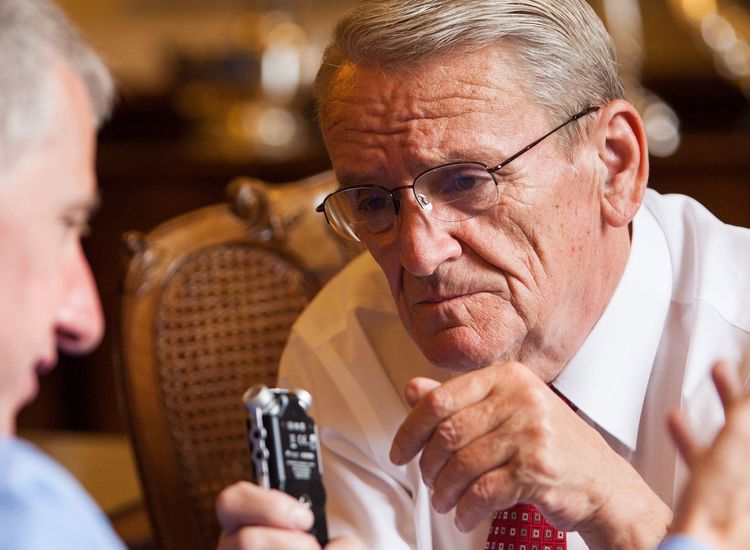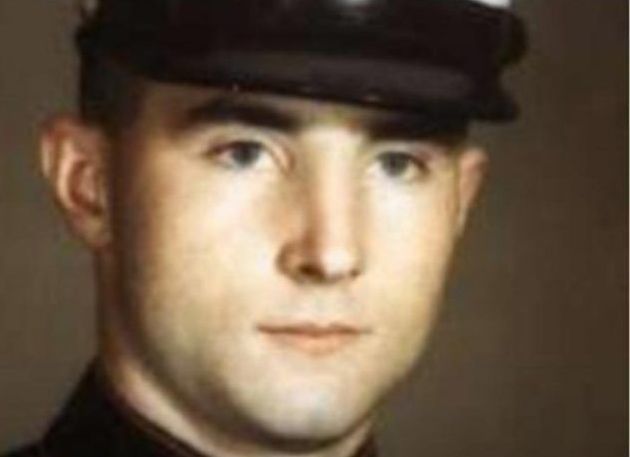By Peter McDermott
“Something had to be done.”
And so William Bailey did something. It was the sort of can-do spirit in the hungry 1930s that in a later time would have him and his kind dubbed “premature anti-fascists.”
Peter Duffy tells the story of the Irish-American seaman Bailey in “The Agitator,” a hero who took on what we see now as the ultimate evil when, for most, it wasn’t the politically convenient thing to do.
The idea of the protest was simplicity itself, but a rather more difficult action to carry out than some had assumed: they would remove the swastika flag from the one of the world’s most famous passenger ships, the SS “Bremen,” and fling it in to the Hudson River.
By the summer of 1935, the increasingly Nazifying Germany had launched its onslaught on the Jewish people. The Hitler regime had already targeted left political parties. Socialists, Communists and trade unionists were being herded into concentration camps. German Catholics generally voted for the Center Party, but now “political Catholicism” was under attack by the government, and the church’s countercultural organizations were viewed as incompatible with the totalitarian project.

The scene outside the precinct on West 47th Street after the arrest in July 1935 of those who would become known as the Bremen Six.
But indifference, it seemed, was the general reaction worldwide. Democratic Senator Homer T. Bone of Washington spoke for much of the political class when he said, “I am a believer in democracy and will have nothing to do with the poisonous European mess.” Senator Thomas D. Schall, a Minnesota Republican, was even blunter: “To hell with Europe and the rest of those nations.” FDR’s administration had certainly no interest in taking a strong stand at this point. Meantime, as all-American a figure as pioneering aviator Charles Lindbergh was among those openly sympathetic to the Nazis.
This was the context in which Bailey and his friends planned their audacious attack on the SS “Bremen,” which itself had undergone a thorough Nazification process.
“The Agitator” is Duffy’s third book about the struggle against the Hitler regime and the second set in the New York area. The action in “Double Agent” — the story of German immigrant William Sebold’s infiltration of Nazi spy rings on behalf of the FBI — takes place in Manhattan, Queens, Long Island and a few places further afield.

William Bailey and his attorney Doris Brin Walker when he was called before HUAC in December 1953.
The “Bremen” with its offensive flag docked on the West Side. “Just a yellow cab ride through the slums of Hell’s Kitchen delivered passengers to the hotels of Penn Station and Midtown,” Duffy writes.
Michael Bailey was born in 1915 in Jersey City and raised in the tenements of the Lower West Side of Manhattan. He would later assume an older brother’s identity, which is how he became William.
There is a cast of New York characters in this account, including 75-year-old Jewish activist and lawyer Samuel Untermyer, the young Congressman Vito Marcantonio of East Harlem and the Tammany-connected Judge Louis B. Brodsky. But its first hero is an illiterate woman from outside Waterford City named Elizabeth Nolan. She would marry fellow Irish immigrant William Bailey, who had done a stint with the British army in India, and she gave birth to 13 children, seven of whom did not survive early childhood.
William Bailey Sr. liked to hang out in bars and would fight at the drop of a hat. He had to be persuaded more than once that the singing of the 1902 song “Bill Bailey, won’t you please come home?” wasn’t a personal attack on him.
Elizabeth would in time marry another military Irishman, although that husband had served in the American armed forces. He turned out, Duffy reports, to be as “drunken, shiftless and violent as her first.”
Listed in the 1920 Census, as a “janitor” for “houses,” the Waterford native was a militant advocate on behalf of her children. Her strong influence can help explain how the juvenile delinquent Michael could be reinvented as William Bailey, in possession of a union card with the International Seamen’s Union.
Bill Bailey began to experience the wider world and form his own opinions. As he approached 80 in the 1990s, he would write of seamen: “Well-read, many of them. But you’d hit a port and they would get stupid-drunk, lose their money, get rolled. Every childish, vulnerable thing that could happen to a human being would happen to sailors.”

William Bailey pictured by the San Francisco Examiner in 1988 with the rifle he used during the Spanish Civil War.
He was impressed by Communist speakers in places like San Francisco and joined the party for the same reason many young people did at the time – they were serious about taking on fascism.
The Irish American was just 20 when he participated with his comrades in an action that made world headlines.
“Swastika flags were to be treated with reverence. They could not be left unattended,” Duffy writes. “They could not be rested against a tree or a building. They were to be prevented from ever touching the ground.” Communists and Jews were not even to lay a finger on the flag. Little wonder both Hitler and Goebbels flew into a rage in Berlin when they heard the news from New York.
Bailey continued the fight in the Spanish Civil War and World War II. When the Communist Party came under attack during the post-war Red Scare, he was called before the House Un-American Activities Committee. He waited for that witch-hunt to subside before cutting ties with the party in 1956, just at the moment the Soviet Union was crushing the Hungarian Uprising.
Duffy, a consummate storyteller, can relay the broad sweep of the American century by focusing on the life of a man who was at once ordinary and remarkable.
Persecuted in the 1950s, Bailey, a long-time resident of Telegraph Hill in San Francisco, was by the time of his death in 1995 greatly admired, respected and loved.
Filmmaker Maria Brooks recalled to Duffy the veteran activist visiting a nursing home populated with aging left-wingers in the Bay area. “They were excited to see him,” she said. “Bill asked them what they’d like to hear. Hands were raised. It was ‘Bremen.’ They wanted to hear that story again.”









